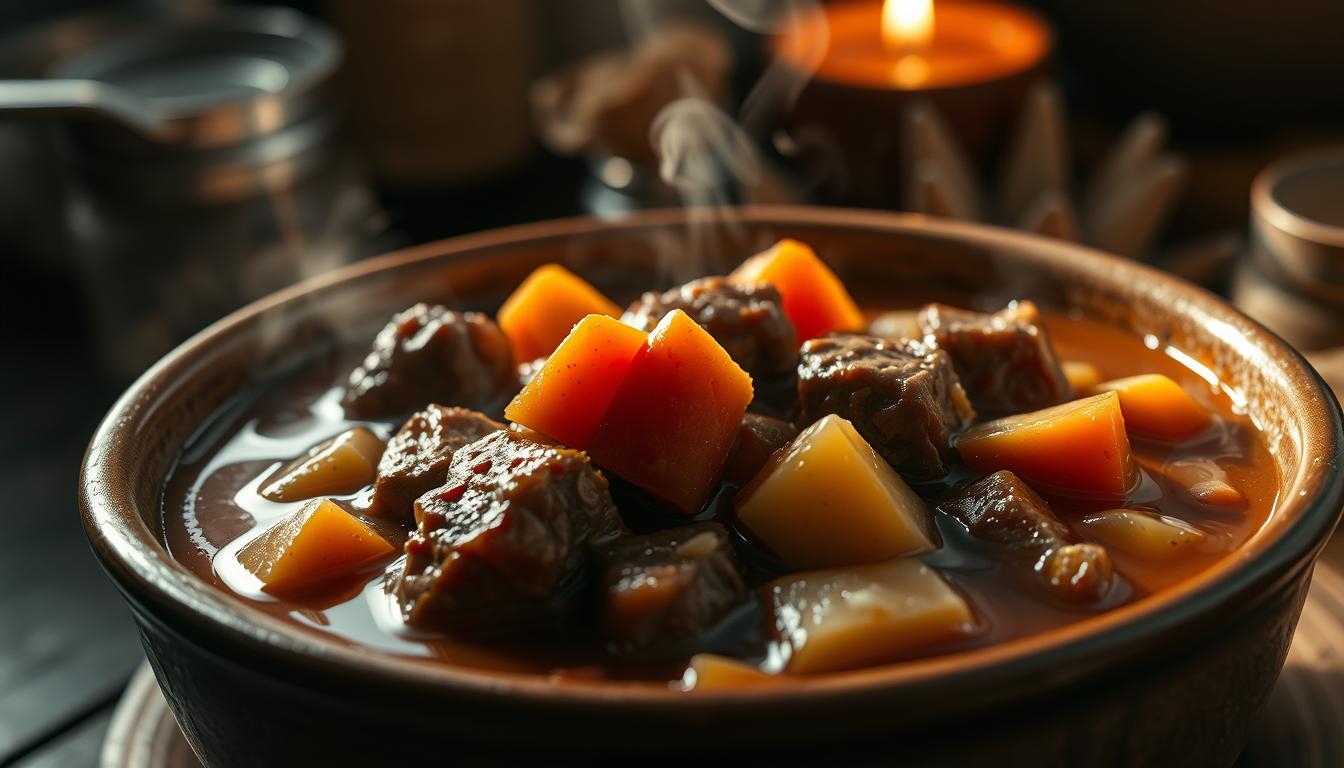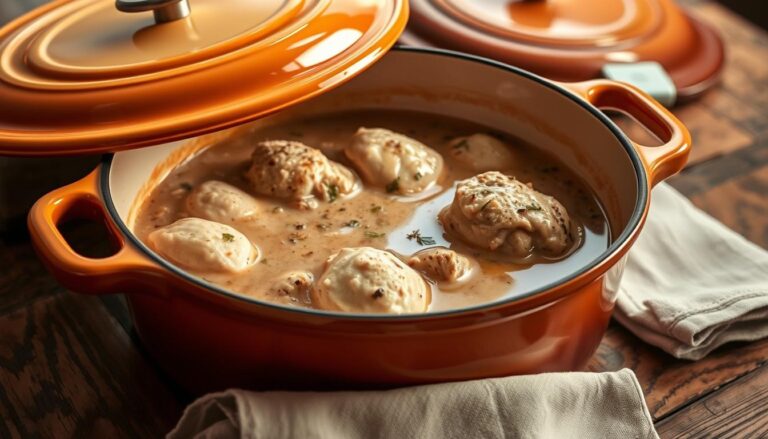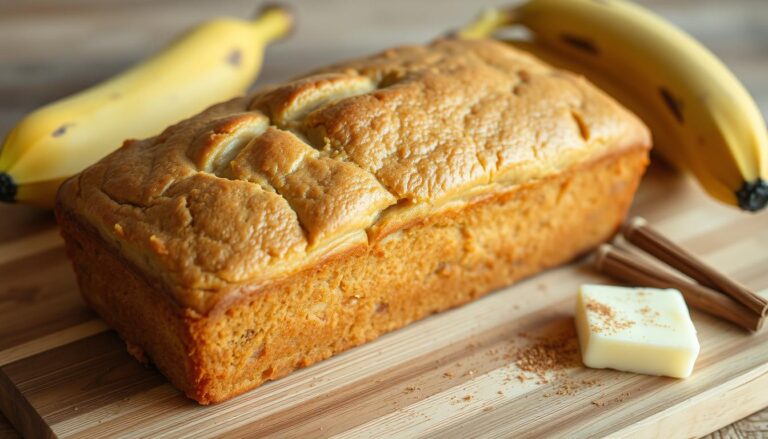Easy Slow Cooker Beef Stew
Imagine coming home to a warm, comforting slow cooker beef stew that’s been simmering all day. With easy slow cooker recipes, you can enjoy a hearty, home-cooked crockpot meal without spending hours in the kitchen.
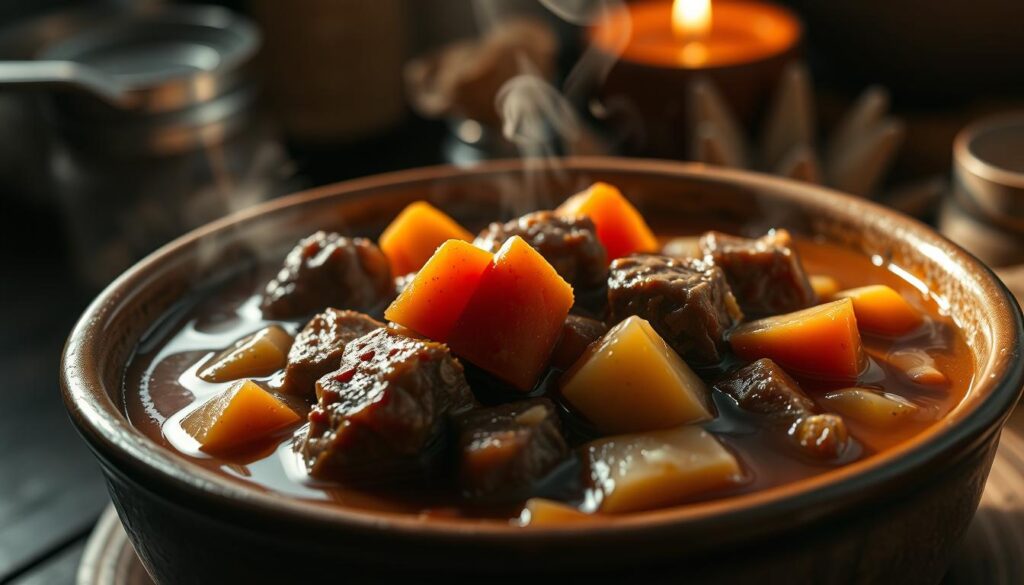
Using a slow cooker is a convenient way to prepare a delicious beef stew crockpot meal. Just add your ingredients, set the timer, and let the slow cooker do the work. This is perfect for busy home cooks looking for crockpot meal ideas.
Key Takeaways
- Easy to prepare with minimal effort
- Perfect for busy home cooks
- Delicious and hearty slow cooker meal
- Ideal for a comforting dinner
- Great for meal prep and planning
The Magic of Slow Cooking Beef Stew
Coming home to a perfectly cooked beef stew is magical. Your slow cooker makes it happen. This meal is a favorite in many homes. It’s because slow cooking tenderizes the meat and blends flavors in a special way.
Why Slow Cookers Are Perfect for Beef Stew
Slow cookers are great for beef stew. They cook the meat slowly, making it tender and flavorful. The low heat keeps the stew moist and hearty. Using a slow cooker means you can prep in the morning and have dinner ready when you get home.
Time-Saving Benefits for Busy Home Cooks
Slow cookers save time for busy cooks. You can prep the meal in the morning. Brown the meat and chop veggies, then add them to the slow cooker. Let it cook while you’re busy, and enjoy a ready-to-eat meal.
| Benefits | Description |
|---|---|
| Tenderization | Slow cooking tenderizes the beef, making it fall-apart tender. |
| Flavor Enhancement | The long cooking time allows flavors to meld together, creating a rich and savory stew. |
| Convenience | Slow cookers allow for meal preparation in advance, saving time for busy home cooks. |
Essential Ingredients for the Perfect Beef Stew Crockpot Meal
A great beef stew crockpot meal needs the right ingredients. The mix of beef, veggies, aromatics, liquids, and seasonings makes it special. It turns a simple stew into a warm, comforting dish.
Selecting the Right Cut of Beef
The beef you choose affects the stew’s tenderness and taste. Chuck roast and short ribs are favorites for their rich flavor and tender texture. For a leaner option, round or sirloin works well, but might need longer cooking.
Choose beef with a good mix of fat and lean meat. This mix makes the stew taste better and feel more satisfying.
Must-Have Vegetables and Aromatics
Vegetables and aromatics are key to a tasty beef stew. Onions, carrots, and potatoes add a sweet, earthy taste. Other veggies like celery, parsnips, and mushrooms bring more depth. Aromatics like garlic and thyme give it a savory smell.
Liquids and Seasonings That Make the Difference
The liquid in the stew is important. Use beef broth, red wine, and tomato paste for flavor. Seasonings like bay leaves, rosemary, and black pepper add to the taste. It’s key to find the right balance for a rich flavor.
With the right ingredients, you can make a delicious beef stew crockpot meal.
Equipment You’ll Need
Before you start cooking your beef stew, it’s important to have the right tools. A well-prepared kitchen makes cooking smoother. It also ensures your stew is delicious and satisfying.
Choosing the Right Slow Cooker Size
Choosing the right slow cooker size is key for your beef stew. A slow cooker that’s too small won’t hold all your ingredients. On the other hand, one that’s too large can cause uneven cooking.
For a typical beef stew recipe serving 4-6 people, a 6-quart slow cooker is perfect. This size gives enough room for the beef, vegetables, and liquid. It ensures even cooking and flavor distribution.
Additional Tools for Preparation
You’ll also need some extra tools to prepare your beef stew. You’ll need a large cutting board for chopping vegetables and a sharp knife for trimming the beef. Measuring cups and spoons are necessary for accurate seasoning.
A wooden spoon or spatula is great for stirring. A meat thermometer is useful for checking the beef’s doneness.
Having these tools ready will make preparation more efficient and fun. It lets you focus on making a rich and flavorful stew.
Preparing Your Ingredients
Getting your ingredients ready is key to a delicious beef stew in your slow cooker. It makes sure your stew tastes great and is safe to eat.
Trimming and Cutting the Beef
First, trim any extra fat from the beef. This makes the stew leaner and avoids it getting too greasy. Use a sharp knife to remove the fat, then cut the beef into pieces about 1 to 1.5 inches big. This size helps the beef cook evenly in the stew.
Vegetable Preparation Techniques
Vegetables are important in a hearty beef stew. Start by washing and peeling your veggies, like carrots, potatoes, and onions. Then, chop them into sizes that match their cooking time. Cut harder veggies like carrots into bigger chunks and softer ones like potatoes into smaller pieces. This way, all veggies will be perfectly cooked by the time the stew is ready.
Pre-Cooking Steps That Enhance Flavor
To make your stew taste better, try some pre-cooking steps. Searing the beef in a pan before adding it to the slow cooker adds a rich flavor. Also, sautéing onions and garlic until they’re soft and fragrant adds depth to your stew. These steps might take a bit longer, but they’re worth it for the flavor.
| Ingredient | Preparation Technique | Cooking Time |
|---|---|---|
| Beef | Trim and cut into 1-1.5 inch pieces | 6-8 hours |
| Carrots | Peel and chop into large chunks | 6-8 hours |
| Potatoes | Peel and chop into smaller pieces | 6-8 hours |
| Onions | Chop and sauté until softened | 6-8 hours |
Step-by-Step Cooking Process
The magic happens in the cooking process. It turns raw ingredients into a tender, flavorful beef stew. Follow these steps to make sure your slow cooker beef stew is perfect every time.
Layering Ingredients for Optimal Results
Layering ingredients correctly is key for a rich flavor. Start with tougher ingredients like beef and root vegetables at the bottom. They need more time to cook.
Then, add softer vegetables like potatoes and carrots. Follow with aromatics like onions and garlic. Pour in your liquid ingredients last, making sure they cover everything. This method ensures all ingredients cook well.
Temperature and Timing Guidelines
Choosing the right temperature and cooking time is important. Most slow cookers have a low setting (6-8 hours) or a high setting (3-4 hours). Cooking on low means it’s ready by dinner if you start it in the morning.
On high, it cooks faster. Always check your slow cooker’s guidelines for temperature settings.
General Guidelines:
- Low setting: 6-8 hours
- High setting: 3-4 hours
When and How to Check for Doneness
Checking for doneness is the last step. Use a fork to test the tenderness of the beef and vegetables. If they slide in easily, it’s ready.
You can also check the beef’s internal temperature. It should be at least 145°F (63°C) for medium-rare, 160°F (71°C) for medium, and 170°F (77°C) for well-done.
Tip: If it’s not tender, cover it and cook for another 30 minutes before checking again.
Thickening Your Beef Stew
Thickening beef stew is an art that needs skill. Getting the right consistency can make your dish amazing. We’ll look at ways to thicken your stew, for different tastes and needs.
Traditional Thickening Methods
For centuries, people have used traditional ways to thicken stews. One method is making a roux. This is a mix of flour and fat, cooked until it’s the right color. Then, slowly add it to your stew.
Another way is using a cornstarch or flour slurry. Mix equal parts of cornstarch or flour with water until it’s smooth. Stir it into your stew and cook until it thickens.
| Thickening Agent | Method | Result |
|---|---|---|
| Roux | Mix flour and fat, cook, then add to stew | Rich, thickened stew |
| Cornstarch Slurry | Mix cornstarch with water, stir into stew | Thickened stew without altering flavor |
| Flour Slurry | Mix flour with water, stir into stew | Thickened stew, may slightly alter flavor |
Alternative Thickeners for Dietary Restrictions
If you have dietary restrictions, there are other ways to thicken your stew. Arrowroot powder is a good choice because it’s gluten-free and doesn’t change the flavor. Mix it with water to make a slurry and add it to your stew.
Potato starch is another option, also gluten-free and great for thickening. Tapioca flour works the same way, adding a neutral flavor and smooth texture.

By using these methods, you can get your stew just right. Whether it’s for dietary needs or just because you like it that way.
Flavor Variations and Regional Recipes
Explore the world of beef stew flavors, from classic to international. Beef stew’s versatility lets you try new things with each dish. It’s a dish that can change with every new recipe.
Herbs and Spices to Transform Your Stew
Herbs and spices are key to beef stew’s flavor. A bouquet garni (thyme, parsley, bay leaves) adds a French touch. For spice, try chili flakes or jalapeños for heat.
Try different spice blends like Italian seasoning or curry powder for a new taste.
International Beef Stew Variations
Beef stew is loved worldwide, with each place adding its own twist. Korean “Galbitang” uses short ribs, soy sauce, and sesame oil for an Asian flavor. Irish stew might include Guinness and potatoes, while Italian stew adds tomatoes and rosemary.
- Korean Galbitang: Short ribs, soy sauce, sesame oil
- Irish Beef Stew: Guinness stout, potatoes
- Italian Beef Stew: Tomatoes, rosemary
Wine and Beer Additions for Depth of Flavor
Wine or beer can make your beef stew richer. Red wine pairs well with beef. Beer, like stouts or porters, adds a unique flavor. The alcohol evaporates, leaving a complex taste.
Trying different flavors keeps your beef stew exciting. Whether you want something classic or adventurous, there’s always something new to try.
Troubleshooting Common Beef Stew Problems
With a little know-how, you can easily solve common beef stew problems. Whether it’s tough meat, uneven texture, or off flavors, we’ve got you covered. This section will guide you to a delicious and satisfying meal.
Fixing Tough Meat Issues
Tough meat often comes from not cooking it long enough or using the wrong cut. To fix this, choose a tougher cut like chuck or brisket for slow cooking. If your meat is already tough, try cooking it longer on a lower heat. Or, shredding the meat can make it tender and tasty.
Adjusting Thin or Thick Consistency
The stew’s consistency is key to its appeal. If it’s too thin, thicken it with a cornstarch and water slurry or reduce the liquid. If it’s too thick, add more broth or water to get it right.
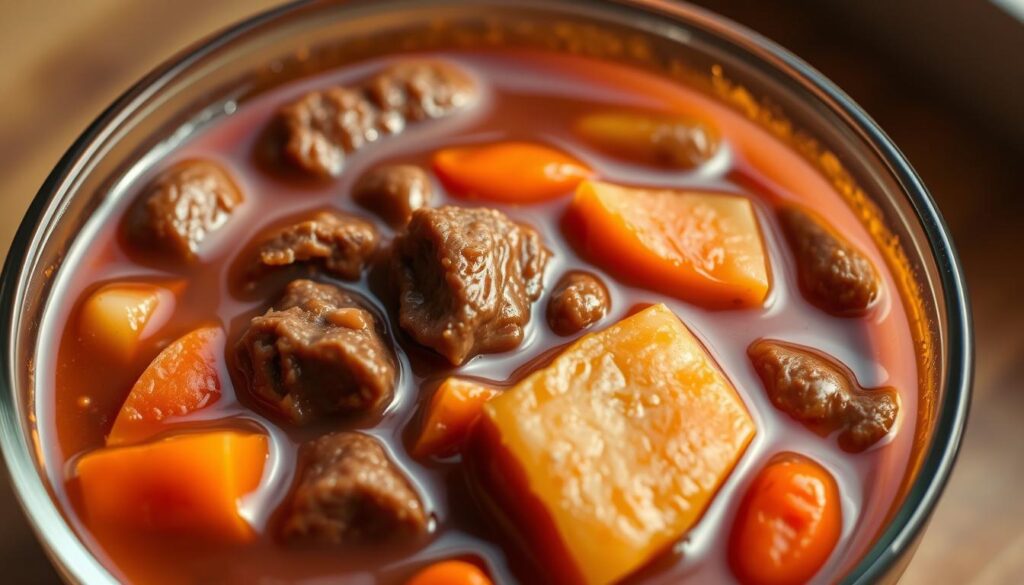
Balancing and Correcting Flavors
Flavor issues can be fixed with simple tweaks. If it’s too salty, adding milk or cream can balance it out. For blandness, add more herbs and spices to taste. Remember, flavors get better with time, so let it simmer longer.
By tackling these common problems, you can make your beef stew even better. Enjoy a satisfying meal every time.
Serving, Storing and Reheating Tips
Once your slow cooker beef stew is ready, it’s time to think about how to serve and enjoy it. Serving suggestions can make your meal better. Proper storage and reheating practices keep leftovers tasty.
Perfect Pairings and Side Dishes
Pairing your beef stew with the right side dishes can enhance your meal. Try it with crusty bread, over mashed potatoes, or alongside a fresh green salad. “A warm, comforting stew paired with a crisp salad is a match made in heaven,” say many chefs.
Safe Storage Guidelines
When storing leftovers, safe storage practices are key. Cool the stew to room temperature within two hours, then refrigerate or freeze it. Use airtight containers to keep it fresh and prevent contamination.
Best Practices for Reheating Without Losing Flavor
Reheating your stew correctly is important to keep its flavor. Reheat it gently on the stovetop or in the microwave. Add a bit of liquid if needed to get the right consistency.
“The art of reheating is just as important as cooking,”
This ensures your stew stays as delightful as when first cooked.
Conclusion: Enjoying Your Homemade Slow Cooker Beef Stew
Your homemade slow cooker beef stew is now ready. You can enjoy the slow cooker benefits of a perfectly cooked meal. The tender beef, flavorful vegetables, and rich broth make for a satisfying meal.
As you take a bite of your homemade stew, think about how easy it was to make. The slow cooker did all the work, letting you relax while your meal cooked. This convenience is a big plus of using a slow cooker.
You might find yourself making this homemade stew over and over. It’s a comforting, home-cooked meal perfect for busy days. And when you have leftovers, you’ll love how easy it is to enjoy leftovers the next day.
FAQ
What is the best cut of beef for slow cooker beef stew?
For slow cooker beef stew, use tougher cuts like chuck, brisket, or round. They get tender with slow cooking.
Can I use frozen beef in my slow cooker beef stew?
Yes, frozen beef works too. But thaw it first for even cooking. Make sure it reaches a safe internal temperature.
How long does it take to cook beef stew in a slow cooker?
Cooking time depends on the slow cooker and beef cut. It’s usually 8-10 hours on low or 4-6 hours on high.
Can I add potatoes and carrots directly to the slow cooker?
Yes, add potatoes and carrots directly. But peel and cut them into bite-sized pieces for even cooking.
How do I thicken my slow cooker beef stew?
Thicken the stew by mixing flour or cornstarch with a little water or broth. Or, reduce the liquid.
Can I cook beef stew in a slow cooker without browning the meat first?
You can cook it without browning. It will be delicious, just less rich in flavor.
What are some common mistakes to avoid when making slow cooker beef stew?
Avoid overcooking, not browning the meat, not adjusting seasoning, and not checking the stew’s consistency.
Can I make slow cooker beef stew in advance?
Yes, prepare ingredients in advance. Store them in the fridge overnight. Cook in the slow cooker the next day.
How do I store leftovers of slow cooker beef stew?
Cool the stew, then store it in airtight containers. Keep it in the fridge for up to 3 days or freeze for up to 3 months.
Can I reheat slow cooker beef stew in the microwave?
Yes, reheat it in the microwave. Stir occasionally for even heating. Check that it’s heated through to a safe temperature.
What are some variations I can try with my slow cooker beef stew recipe?
Try adding different vegetables, using various broths, adding wine or beer, or experimenting with herbs and spices. This creates unique flavors.

